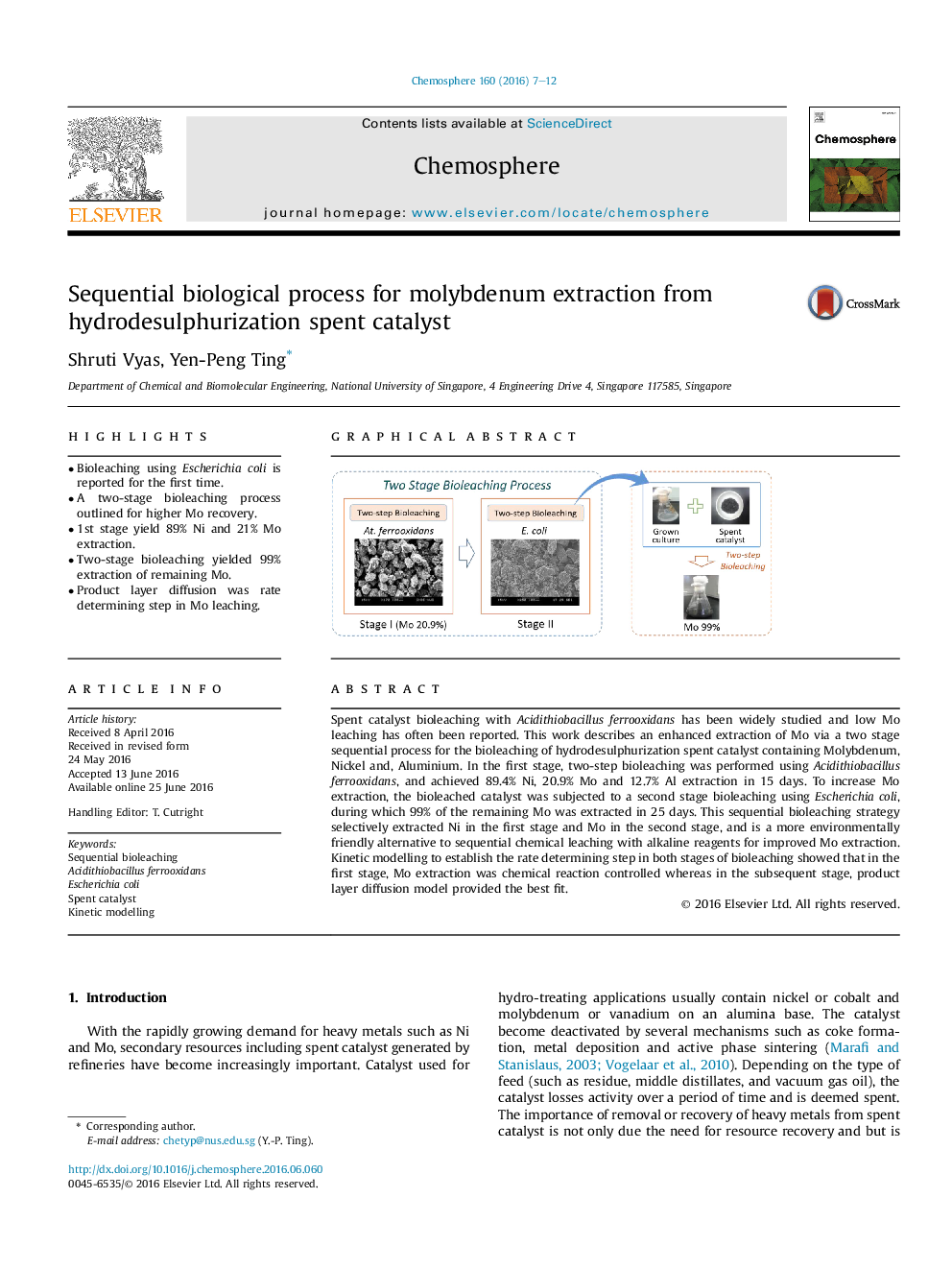| کد مقاله | کد نشریه | سال انتشار | مقاله انگلیسی | نسخه تمام متن |
|---|---|---|---|---|
| 4407386 | 1618811 | 2016 | 6 صفحه PDF | دانلود رایگان |
• Bioleaching using Escherichia coli is reported for the first time.
• A two-stage bioleaching process outlined for higher Mo recovery.
• 1st stage yield 89% Ni and 21% Mo extraction.
• Two-stage bioleaching yielded 99% extraction of remaining Mo.
• Product layer diffusion was rate determining step in Mo leaching.
Spent catalyst bioleaching with Acidithiobacillus ferrooxidans has been widely studied and low Mo leaching has often been reported. This work describes an enhanced extraction of Mo via a two stage sequential process for the bioleaching of hydrodesulphurization spent catalyst containing Molybdenum, Nickel and, Aluminium. In the first stage, two-step bioleaching was performed using Acidithiobacillus ferrooxidans, and achieved 89.4% Ni, 20.9% Mo and 12.7% Al extraction in 15 days. To increase Mo extraction, the bioleached catalyst was subjected to a second stage bioleaching using Escherichia coli, during which 99% of the remaining Mo was extracted in 25 days. This sequential bioleaching strategy selectively extracted Ni in the first stage and Mo in the second stage, and is a more environmentally friendly alternative to sequential chemical leaching with alkaline reagents for improved Mo extraction. Kinetic modelling to establish the rate determining step in both stages of bioleaching showed that in the first stage, Mo extraction was chemical reaction controlled whereas in the subsequent stage, product layer diffusion model provided the best fit.
Figure optionsDownload as PowerPoint slide
Journal: Chemosphere - Volume 160, October 2016, Pages 7–12
